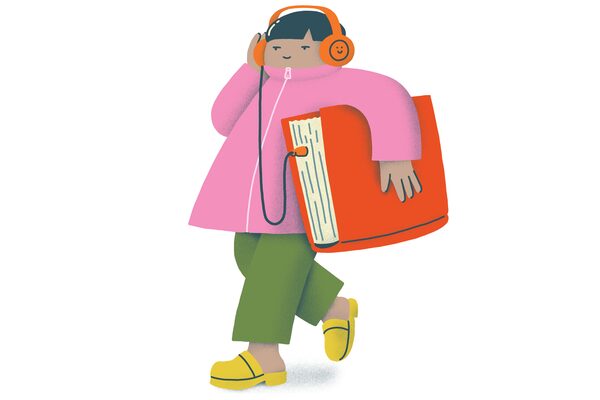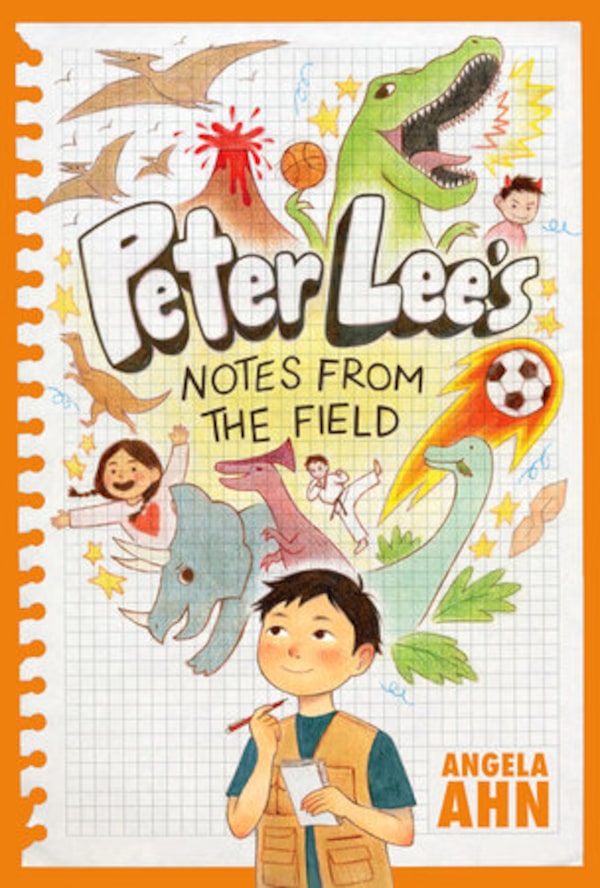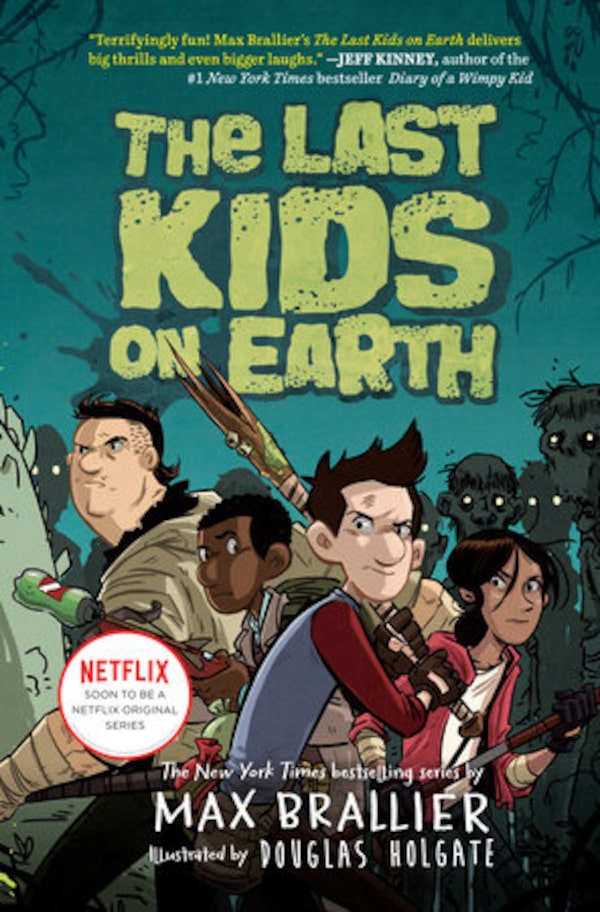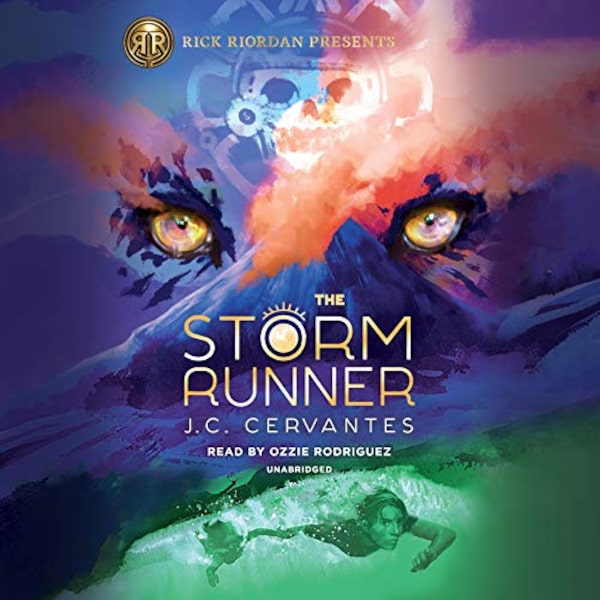
Illustration by Allison + Cam
Sign up for our Books newsletter for the latest reviews, author interviews, industry news and more.
The love of reading is a gift for life, and it has been a godsend during the pandemic for readers of all ages, but perhaps particularly for children.
“A really good story, when it’s read in a really positive environment, does help kids with resilience,” says Sandra Huehn, community co-ordinator with the national literacy organization Frontier College. “Reading does change the brain. It does calm the brain down. So in terms of resiliency, books are the panacea.”
Parents often stress about their child’s reading habits, however. They’re not reading enough. They’re not reading the “right” books. They keep re-reading the same stories over and over again – or they’re not interested in books at all.
Authors, librarians, booksellers and literacy experts have heard it all. And they have a few ideas about gateways that can encourage kids to read, which should bring some comfort to parents and excitement to the children themselves.
Read more in this series
- What is one thing we can do about children’s learning loss during the pandemic? Put a book in their hands
- Canadian authors tell us the books that shaped them (and the ones kids should read today)
- Literacy in the pandemic: We asked kids to tell us about their favourite books
- Spring 2021 books preview: 45 new titles for you and the young readers in your life
- From dance to drama to drawing, children need an arts education now more than ever
Part of the trick is expanding your view of what “reading” actually means. “Libraries are not just about books anymore,” says Maryn Ashdown, associate director of neighbourhood and youth services with the Vancouver Public Library (VPL). “We’re a hub where families and kids can find stories in any format that works for them. And really, we’re format-agnostic. It doesn’t matter how you get there – we want them to engage with ideas and with information, and with new windows on the world.”
Personal connections

Handout
Whenever a young person comes to the VPL in search of a book, Kelly Savage, acting assistant manager of the children’s library, has a few questions for them: What are you watching? What do you and your friends talk about? What are you playing together?
“And whatever the answer is, my reaction is, ‘Awesome,’” says Savage, who then embarks on some literary detective work to find the right fit.
A child’s interests, social connections and life experience can help unlock a love of reading. Is the child into basketball? Baking? Dance? Dinosaurs? There’s a book for that, whatever “that” is.
This is also why diversity in children’s books can be so important: because kids should see characters who don’t just share their interests, but who look like them, too. Consider Peter Lee’s Notes from the Field: The titular character is an 11-year-old Asian-Canadian who wants to be a paleontologist, has asthma and is worried about his grandmother. The book ticks many boxes in terms of entry points.
“Even a Chinese-Canadian character in a middle-grade novel – you’re hard-pressed to find one,” says author Angela Ahn, who is of Korean descent and lives in Vancouver. “I just feel like we just need these stories to be normalized, to just be available – maybe not exceptional anymore.”
Camesha Cox, who runs the literacy organization the Reading Partnership, adds a crucial point: “It’s important for all kids to see kids who are not white. Black kids need to see Black kids in books, absolutely. But white kids need to see Black kids in books, too.”
Screen adaptations

Handout
Max Brallier has stood in countless gymnasiums and cafeterias, looking out at seas of students who are visibly checked out. “I’ll say ‘What I do is I write books,’ and their eyes glaze over,” Brallier says from his home in California. But when he tells them he’s written books based on Lego characters or TV shows like Steven Universe and Adventure Time, “then they explode.”
Brallier is now best known for creating The Last Kids on Earth book series, about a monster zombie apocalypse. The series was adapted for Netflix by Vancouver’s Atomic Cartoons, and it has become a staple of pandemic viewing for the eight-to-12-year-old set. The power of the show can’t be overstated in terms of bringing in new readers, says Brallier. “The number of eyeballs on it in 24 hours is much larger than you get with years of having the book at Barnes and Noble and book fairs and independent bookstores,” he says.
And he’s heard from plenty of grateful parents, teachers and librarians about the benefits of his family-friendly apocalyptic world – that the series is “a good on-ramp or entry point for – the classic term is reluctant readers,” says Brallier, 37, who is also the author of the Eerie Elementary series (under the name Jack Chabert).
Brallier gets it. As a kid, his favourite book was (and remains) Bart Simpson’s Guide to Life: A Wee Handbook for the Perplexed. “Books are a big turn-off to certain kids,” he says. “And so anything that makes the entryway easier or more accessible is a positive.”
(Many literacy experts avoid saying “reluctant reader.” As Ashdown put it to me: “we legit hate that term.”)
Alyson Shaw, assistant professor of pediatrics at the University of Ottawa and an early-literacy adviser and advocate with the Canadian Paediatric Society, agrees. “Any book that gets kids excited to read can be valuable. Reading books that are based on games or TV or movies can help kids realize that what’s inside a book is cool,” she says. There is no shortage of screen-inspired options: memoirs by YouTubers like Lilly Singh; books that live in the Minecraft, Pokémon, Marvel, DC, Lego and Among Us universes, and a whole range of Star Wars spin-offs.
At Vancouver KidsBooks, kids (or parents) ask, on a daily basis, for material from a specific world they’ve discovered on-screen. Consider Nancy Springer’s Enola Holmes Mysteries. The series has been around since 2006, but last year, Netflix released a film based on the first book. “All of a sudden they’re bestsellers at Christmas,” says the store’s co-owner Kelly McKinnon. “Those kids saw the movie, they liked it, they read the book. And now they’re interested in other mysteries, because everything’s kind of a bridge to everything else.”
We asked a few kids whose parents work at The Globe and Mail what books they love reading, and the answers ranged from series about talking cats to graphic novels about bullying
The Globe and Mail
Graphic novels

Handout
For all the very real suffering it has caused, the pandemic has provided some vindication for one of Canada’s best-loved children’s book characters: Scaredy Squirrel, hiding in his nut tree with his antibacterial soap, rubber gloves and toilet paper. Now Quebec author Mélanie Watt is back with Scaredy Squirrel: In a Nutshell – a graphic novel aimed at kids aged six to nine.
“I think he’s a character that’s still really relevant, especially in these times,” says Watt from her home outside Montreal. “And the idea of a new format, like a graphic novel, gave me another angle to explore the character.”
Parents who might have grown up thinking of comic books as the literary equivalent of junk food need to change that mindset. “It’s important to recognize that if children find graphic novels engaging and at the right level for their reading, that’s something to be encouraged and celebrated,” says Ariel Siller, CEO of the Canadian Children’s Literacy Foundation.
Young readers can be intimidated when they open a book and face a wall of words on every page. Graphic novels (or hybrids filled with illustrations, like Diary of a Wimpy Kid) can offer a gentler alternative. “They’re great for hooking kids, and that’s all that matters,” says Huehn. “Reading skills transfer. Even texting transfers. Anything that’s printed transfers. If they’re reading online or playing games – that helps them improve their fluency.”
B.C. author Cale Atkinson, who has illustrated books for Disney and Marvel, recently published Simon and Chester: Super Detectives!, the first in a series of graphic novels. Growing up outside Vancouver, it was comics and graphic novels that spoke to him – largely because the visual elements meant he felt confident accessing them. “It allowed me to dive into stories that maybe I wouldn’t have otherwise,” he says. “I don’t see a difference as far as what I get out of a book, whether it’s a novel, a graphic novel – anything that’s conveying a story. If it’s done right, I think they all work.”
Audiobooks

Handout
When Forest Sinclair washes the dishes, his 13-year-old body might be in his Vancouver kitchen, but in his imagination, he’s off with Mayan gods in the world of The Storm Runner or accompanying Percy Jackson on his Greek demigod adventures. Forest is an audiobook devotee; he listens for hours every day.
“If I’m doing some sort of chore that’s boring, I like to lose myself,” says Forest, who recently bought a fancy pair of headphones – an investment made in large part to improve his audiobook-listening experience.
In addition to getting eyeballs away from screens and encouraging kids to use their imagination, audiobooks can improve vocabulary and demonstrate how exciting it is to be transported to another world, to really care about fictional characters and what happens to them. And that curiosity might one day transfer to the pages of a traditional book.
On a purely practical level, audiobooks are a great way to keep children engaged when parents aren’t available (or during long car rides – Forest and his family listened to The Lord of the Rings, rapt for hours, on a pre-pandemic road trip). “We need to be open-minded about all of those strategies and feel good about them,” Siller says.
“There’s been a huge audio explosion for all of us – particularly for kids, and particularly in the past 12 months – where they’re constantly looking to be stimulated, taken to faraway lands,” says Georgia Knox, Canada country manager for Audible, which offers about 50,000 titles for kids. Not only is there more content being created, but usage from current listeners is up along with demand from new listeners.
She also points out that many kids are learning at home right now, and audiobooks can help. Shortly after the pandemic hit, Audible started offering a selection of kids’ books for free in eight languages, attracting listeners from 120 countries. “We very quickly, a year ago, realized how much well-told stories could help through a challenging time,” says Knox.
You’re not limited to audiobooks, either. There are oodles of podcasts aimed at readers of all ages, including serialized stories and book club-type podcasts aimed at younger readers. “Find ways to make it fun – that’s the main thing,” says Cox. “The more fun, the better for the child, and the more they will engage.”
Tips for parents from five reading experts
Sandra Huehn, Frontier College
Teens are extremely resistant to being tutored for reading, especially if English is their first language. A great way to help is to get them to read with younger students. That way, they’re working with easier material – without any stigma – with an engaged young reader, and they feel good about what they’re doing. And build in rewards: “Get your reading assignments done all week and we can go for ice cream,” for instance. The other crucial reward is recognition, praise and encouragement – something like, “I saw you reading your book uninterrupted for 15 minutes. Way to go.” But extrinsic rewards only go so far. To cultivate a love of reading, think of the book itself – and the experience of reading it – as the real reward.
Alyson Shaw, Canadian Paediatric Society
Improving literacy doesn’t always have to be about reading a book. Find language-rich activities to do at home: baking bread from a recipe, reading the sports pages if your child is into hockey, having your child read out instructions from a manual when you’re putting something together. Parents can also play a significant role in their child’s enthusiasm for reading just by the simple activity of cuddling up with them 20 minutes a day and looking at a book. And it’s good for parents to model reading themselves – it’s great when kids catch their mom or dad enjoying a good book.
Kelly McKinnon, Vancouver Public Library
If you want to get your child reading, you need to bring home four or five books, put them on the kitchen table, give them a choice, and let them make a decision.
Ariel Siller, Canadian Children’s Literacy Foundation
Connect what a child is reading in a book to the real world – things they’re seeing in person, such as a raccoon or a truck. Mapping the books to the environment around them is really powerful. If you can help children understand that books are representations of concrete things, that’s an important conceptual step. And if you can read with your child a bit above the level they would be reading on their own, it helps stretch their vocabulary and conception of what they can read. That’s good for them and creates quality time with you.
Steacy Penney, CEO, Calgary Reads
Creating an incredible environment where children can read is as important as what they read or who they read with: a comfortable chair, lots of books to choose from and great lighting. Don’t underestimate the power of a flashlight for a child to read with in bed at night. Children should also be brought up hearing lots of words, in any language. Sometimes non-native English speakers are worried about speaking in their first language because they want their child to learn English. Children need to hear the people they love talking to them in whatever language that is.
Editor’s note: (April 28) An earlier version of this article misspelled Max Brallier's name. This version has been updated.




 Marsha Lederman
Marsha Lederman